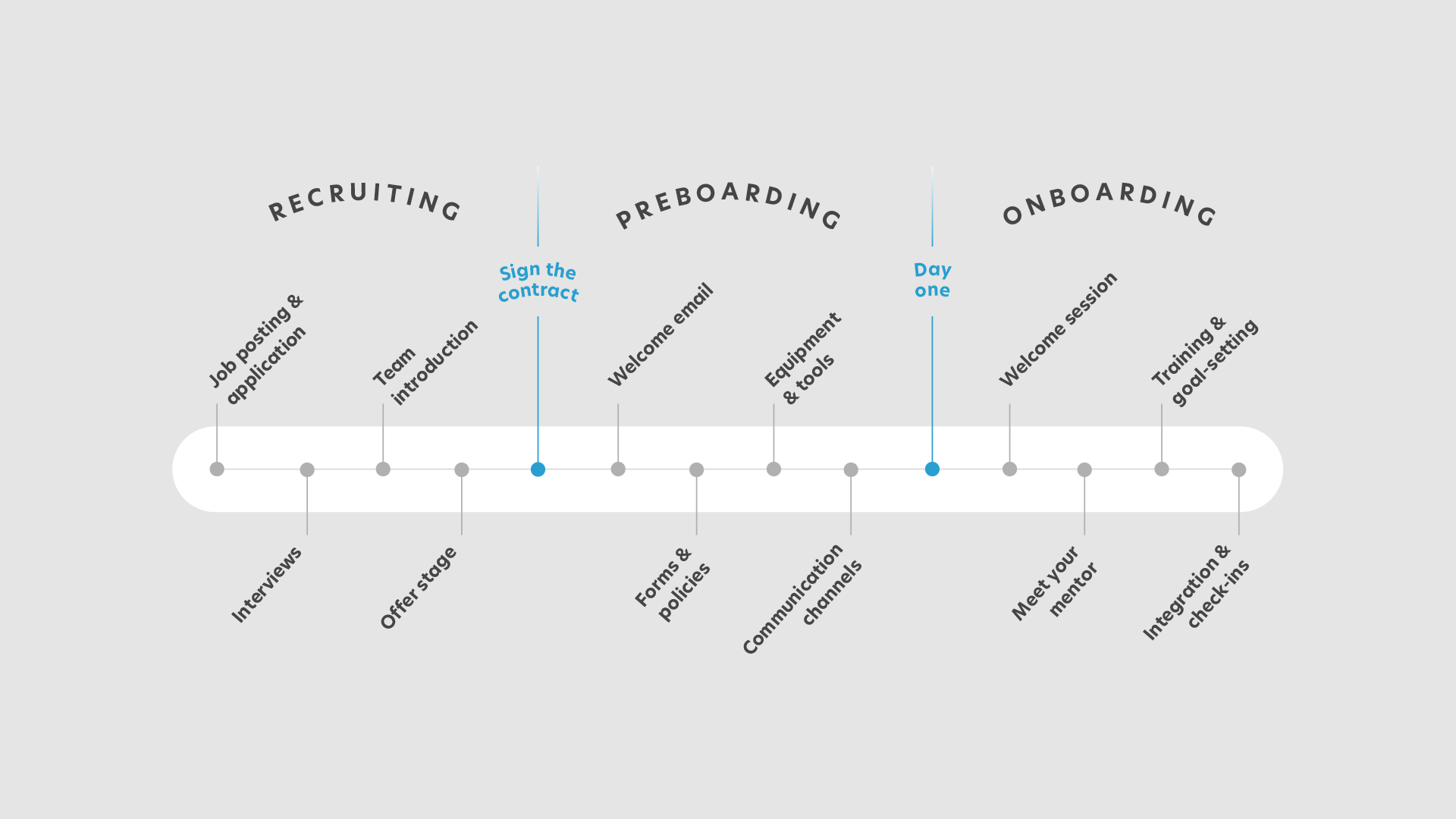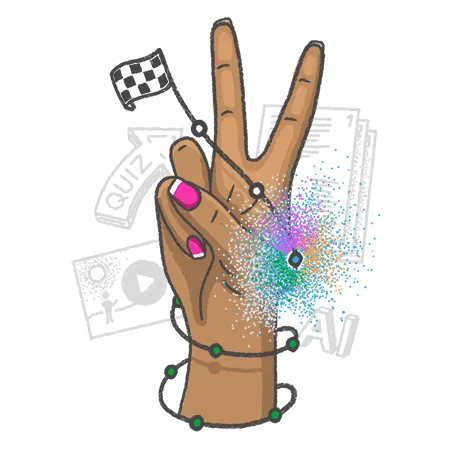Preboarding, what does it really mean?
Preboarding, sometimes called pre-onboarding, is the phase after a candidate signs the offer but before their first working day. It focuses on keeping excitement high, completing admin tasks early, and giving new hires the context they need to hit the ground running. Typical preboarding touchpoints include welcome emails, digital paperwork, IT set-ups, and an introduction to company culture. Unlike formal onboarding, which begins on day one and can last months, preboarding happens off-site and is all about preparation and anticipation.
Why preboarding for employees matters for retention and engagement
- 82 % higher new-joiner retention is linked to companies that run a structured preboarding program. HiBob
- One in three new hires quit within their first 90 days if they feel disconnected — a risk that rises when silence falls between contract and day 1. Enboarder
- Employees who experience strong onboarding (preboarding included) are 69 % more likely to stay for at least three years, saving thousands in re-hire costs. Think Learning
- Yet 36 % of employers still lack any structured onboarding at all, leaving engagement gains on the table. Genius
In short, preboarding closes the “dead zone” between offer and start date, protecting your recruitment investment and boosting early engagement metrics.

Preboarding vs Onboarding – What’s the Difference?
Preboarding begins the moment an offer is signed and lasts until day one, priming new hires with practical details and a sense of belonging. It covers the “admin and excitement” basics like welcome messages, digital paperwork, IT setup, culture snippets, and a clear first-week schedule, typically driven by HR and the hiring manager. Its success shows in ready-to-go equipment and a 100 % show-up rate on the first day.
Onboarding picks up from the employee’s first day and can run 30–90 days or more. The focus shifts from preparation to full integration: role-specific training, deeper culture immersion, goal setting, mentoring, and ongoing feedback, owned by HR, the manager, the team, and often a buddy. Strong onboarding shortens time-to-productivity and lifts 90-day retention, but it works best when preboarding has already cleared the logistical clutter and built early engagement.
In short, preboarding lays the groundwork so that onboarding can dive straight into meaningful learning and integration instead of administrative catch-up.
Preboarding checklist
Use this quick list to make sure nothing slips through the cracks:
- Paperwork sent & signed (offer letter, tax, NDAs)
- Welcome email + “Meet the team” video
- IT & workspace ready (accounts, hardware, software, desk)
- Handbook & policies shared (values, code of conduct, benefits)
- First-week schedule confirmed (training slots, 1-on-1s, buddy lunch)
- Welcome kit dispatched to build early brand affinity
- Optional pre-start event (town-hall, virtual coffee) to break the ice.
- Day-before reminder with parking, dress code, or video-call link.

Done right, preboarding safeguards your hiring investment: it drives higher first-day show-up rates, boosts early engagement, and feeds seamlessly into a smoother onboarding. Follow the checklist, keep communication flowing, and you’ll transform those crucial pre-start weeks from a risk of drop-off into a springboard for long-term success.
Ready to put your preboarding on autopilot? Book a quick demo of Learnifier and see how easily you can deliver an effective new-hire experience before day one even begins.






.webp)



.webp)









